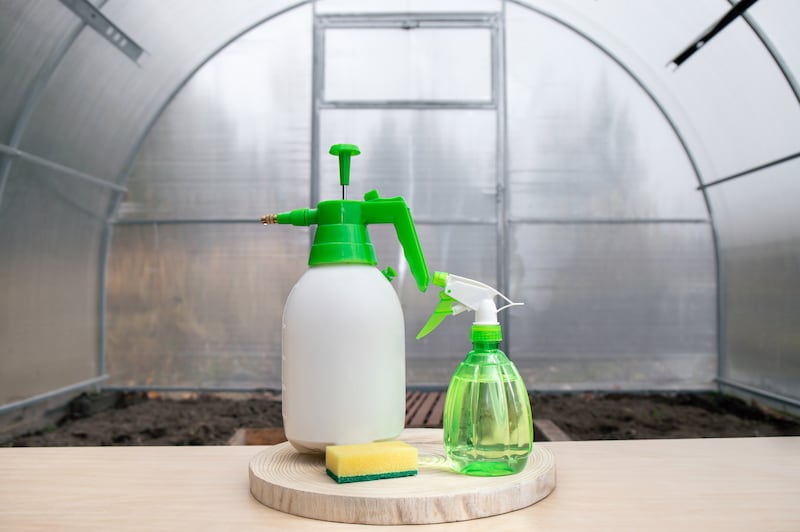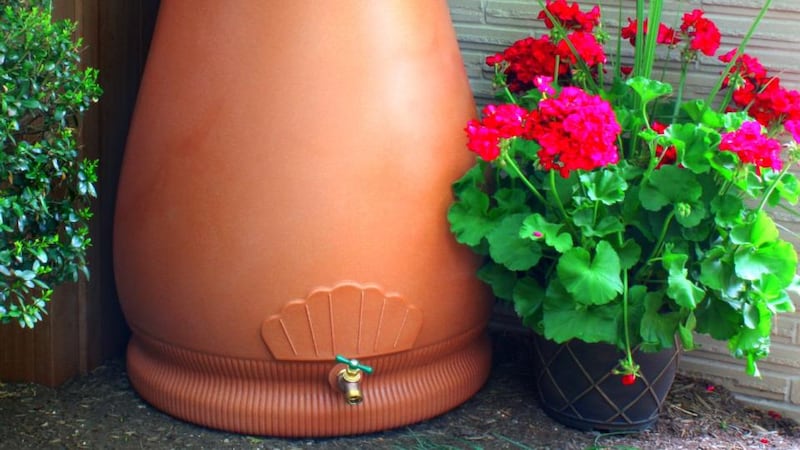You can sense it in the slowly stretching evenings, the higher skies, the shifting quality of light, and the noisy chatter of birds. And you can see it in the flowering hellebores, witch-hazel and sweetly perfumed daphne, as well as the snowdrops, daffodils, cyclamen, aconites, crocuses and dwarf irises that have pushed their snouts through cold, wet soil to burst into determined, brilliant bloom.
You can also feel it: that gardener’s instinct that says it’s time once again to start riffling through old stashes of seed packets, order seed, get tools ship-shape and begin pottering, pruning and weeding. As another great circle of the gardening year wheels to a close, spring – dare we say that word out loud – is only just around the corner. Below are some tips on how to be as ready as you can.
Tackle weeds now
Last year’s wet summer and record-breaking mild, wet autumn resulted in explosive weed growth while simultaneously preventing many gardeners from tackling weedy beds and paths in a timely and effective manner. So, grab the opportunity to do so over the coming weeks before other more pressing jobs get in the way. See the Q&A section below, for some planet-friendly ways to get beds and borders back in shape, as well as the best tools to help you do so.
Other very useful, organically-acceptable methods of transforming weedy ground into productive garden beds include using a few overlapping layers of cardboard spread over the surface and then covered with a 15cm-20cm layer of organic mulch (see mulch.ie and envirogardenandhome.com) or good-quality top soil (landscapedepot.ie) into which you can then immediately plant.
READ MORE
Another more time-consuming but less labour-intensive alternative is a sheet of resilient plastic spread over the ground and secured in place with planks/heavy stones or by trenching the edges 15cm deep in the ground. Left for a minimum of three-four months (ideally six-nine months) it will kill off most weeds. In both cases, make sure to first cut all weedy growth to ground level with a strimmer or scythe, and to dig out the roots of any woody plants. Use a sharp hoe to tackle weedy growth on paths, ideally choosing a bright, dry day to do so, then use a spring-tined rake to collect them to prevent the possibility of re-rooting or seeding.
Scrub down pots, seed trays, plant benches, glasshouses and polytunnels

This might sound like so much boring housekeeping but will save you time and heartache in the busy growing season ahead by helping to prevent common pests and disease such as slugs, snails, red spider mite and aphids that can damage or even kill plants, especially at the vulnerable seedling/young transplant stage.
Dirty glass and plastic coverings also badly affect the quality of light and lower the temperature in covered structures such as glasshouses and polytunnels, reducing growth and disimproving plant health. For large structures, use a sponge, soft brush, mop and warm, soapy water. For hard-to-reach polytunnel roofs, use some old sheets tied together to make a rope, dunk it in water and find an obliging helper to stand at the other side while you gently pull it back and forth. Dead plants, old or faded stems/leaves and weeds inside glasshouses and polytunnels can also act as convenient hosts for overwintering pests and diseases, so take the time to clear these away.
Stock up on supplies of seed, tubers and cutting compost
Buy plant labels, a fine-nibbed waterproof pen, fine-grade vermiculite, good-quality, hard-wearing seed and modular trays, a long-handled watering can with a fine rose, good-quality liquid seaweed feed and horticultural fleece to protect vulnerable new growth on any chilly nights ahead. See my January 20th column for recommended suppliers of the former, and last week’s Q& A section for advice on the latter.
[ An expert’s guide to the best places to buy seeds and bulbsOpens in new window ]
Some sort of heated propagation unit is always hugely useful. If you grow only a small amount from seed, then a standard electric propagator such as the Super 7 is ideal. For something bigger, consider using a thermostatically controlled heat mat (Fruithill Farm) or the Vitopod, which comes with its own grow lights and is brilliant for preventing seedlings from becoming leggy. Alternatively, you can make your own electric propagating unit using a soil warming cable, roof insulation, plywood, sand and clear polythene sheeting.
Ready your tools

Get secateurs and loppers cleaned and sharpened and garden machinery such as lawnmowers, strimmers, hedge trimmers and rotovators serviced and sharpened before the mad rush of spring makes for inevitable delays.
Finish winter-pruning shrub roses and climbing roses as well as late-summer flowering types of clematis (examples include varieties of Clematis viticella and Clematis texensis) to encourage a great flowering display later in the year. In the kitchen garden or allotment, finish pruning fruit trees, cane fruit and bushes. If you’re not sure how to go about it, check out rhs.org.uk which gives a comprehensive step-by-step guide.
Get water-wise

Last spring’s searing heat and near-drought conditions were a timely reminder to be prepared for these kinds of challenging growing conditions, which climate change has made increasingly likely. Instal water butts to collect rainwater from gutters (these can also be fitted to glasshouses and polytunnels), consider installing drip irrigation for polytunnel-grown crops. If outdoor taps are inconveniently situated in terms of easy watering, consider installing them in a more suitable location.
A 5cm layer of organic mulch spread around the roots of plants in spring/immediately after planting will also help to protect the soil from evaporation and lock in moisture. You can use well-rotted manure, home-made garden compost, foraged seaweed or one of the commercially produced products available from suppliers mentioned above.
Water sprinklers should only ever be used as a last resort but it’s still always a good idea to have an oscillating-type one made of sturdy metal on standby, just in case of emergencies (these are inevitably hard to source in the middle of a drought).
Look for joy
Finally (and perhaps most importantly) be brave. If a plant or other element of your garden or allotment just doesn’t give you joy, then consider replacing it with something that does. The same goes for dead or dying plants barely clinging to life. Put them (and you) out of their misery. As long as the ground is not waterlogged or frozen, this is a great time of year to plant replacement young trees, hedging, shrubs and perennials, many of which are still available from good garden centres as well as online suppliers as affordable bare-root or root-ball specimens at much more affordable prices than their container-grown equivalents. See futureforests.ie and irishseedsavers.ie for a wide selection. Thinking of a complete garden redesign? This is also a great time of year to put things in motion, instead of joining the mad rush of people desperately looking for a garden designer or landscaper in late spring, at which stage they’re fully booked for months ahead (see glda.ie and alci.ie).
This week in the garden
- While it’s still a little early to sow seed of most flowering annuals and vegetables, the following need to be sown soon for productive/floriferous plants. Chillies, sweet peppers, aubergine, celeriac and tomatoes (for an early crop grown under cover) with good bottom heat and under cover: sow sweet pea, larkspur and broad beans in a cool, bright room or frost-free glasshouse.
- Start “chitting” or sprouting seed potatoes of early varieties in a cool, bright, frost-free place for transplanting into their permanent position next month. Always handle seed potatoes very gently when chitting and planting them to prevent damage to both their soft flesh and the emerging young shoots, which are crucial for healthy growth.
Dates for your diary
- The following Irish gardens are opening to the public in the coming weeks to celebrate the snowdrop season, with some offering guided tours. Please check individual websites/ social media for details: RHSI Bellefield, Shinrone, Co Offaly; Altamont, Co Carlow (heritageireland.ie and carlowtourism.com); Coosheen, Co Cork; Blarney Castle, Co Cork; Hunting Brook Gardens, West Wicklow: Burtown House, Co Kildare; Primrose Hill, Co Dublin; Woodville Walled Garden, Go Galway; Ballyrobert Gardens, Co Antrim.
- Saturday-Sunday, February 17th-18th, 10am-5pm: Mount Venus Nursery, The Walled Garden Tibradden, Mutton Lane, Dublin 16, Helleborus Weekend 2024, with a wide selection of new varieties on display and for sale.
- Saturday, February 24th: Crowne Plaza Dublin Airport Hotel Conference Centre, Northwood Park, Santry, Dublin D09 X9X2, Space to Grow, the Garden & Landscape Designer Association’s (GLDA) 2024 seminar with a host of international expert speakers. Tickets €60-€140.
- Sign up for push alerts and have the best news, analysis and comment delivered directly to your phone
- Find The Irish Times on WhatsApp and stay up to date
- Our In The News podcast is now published daily – Find the latest episode here





















